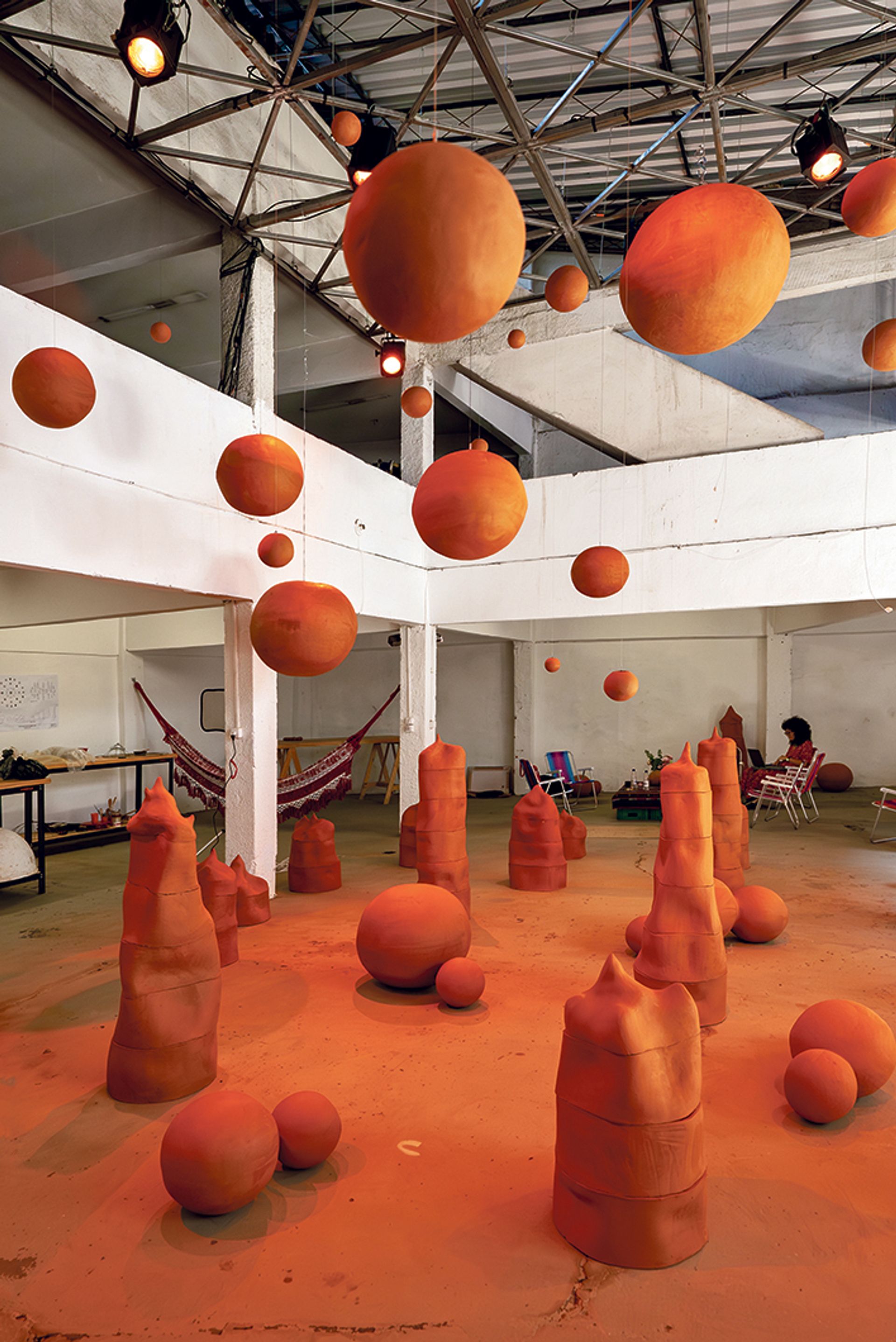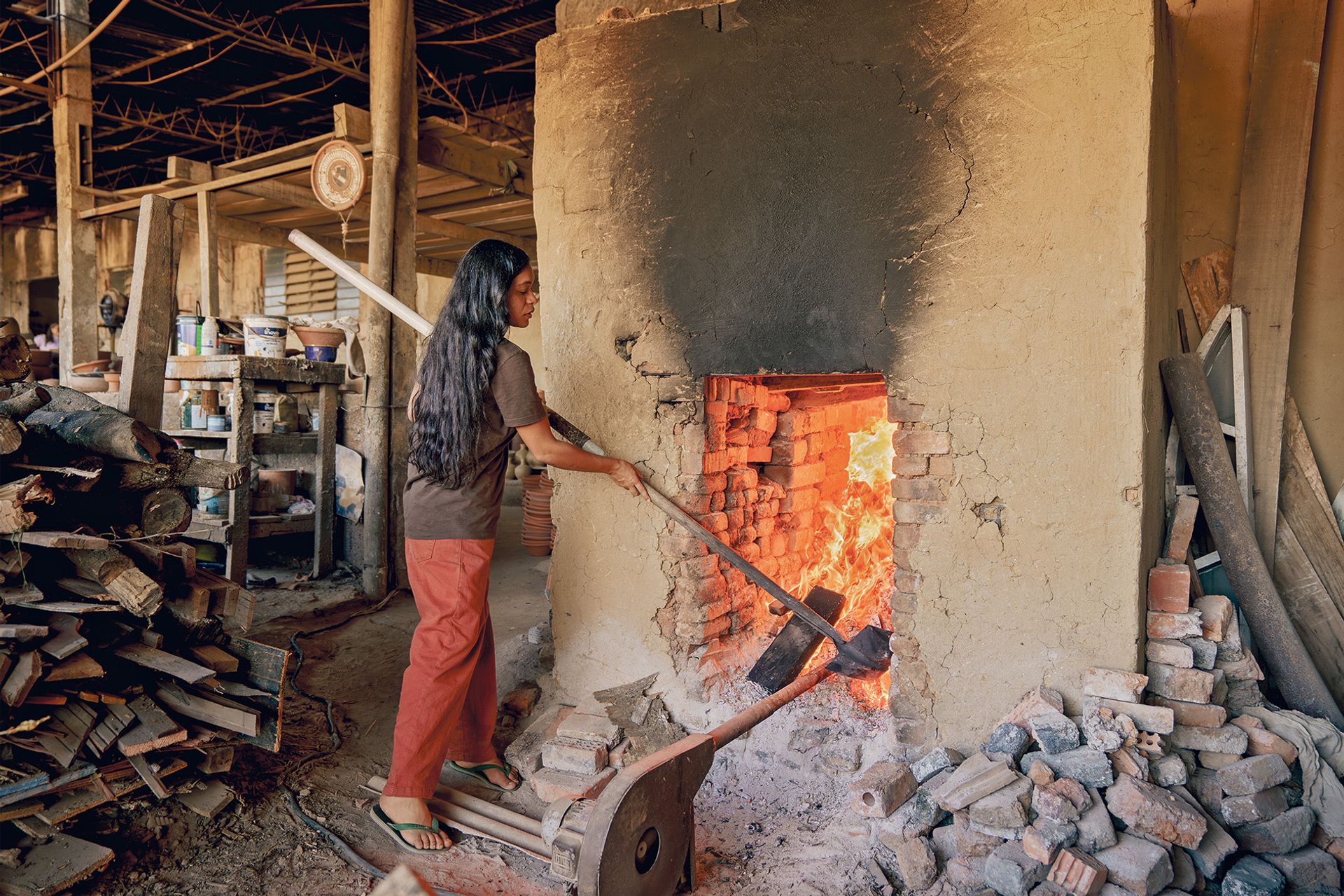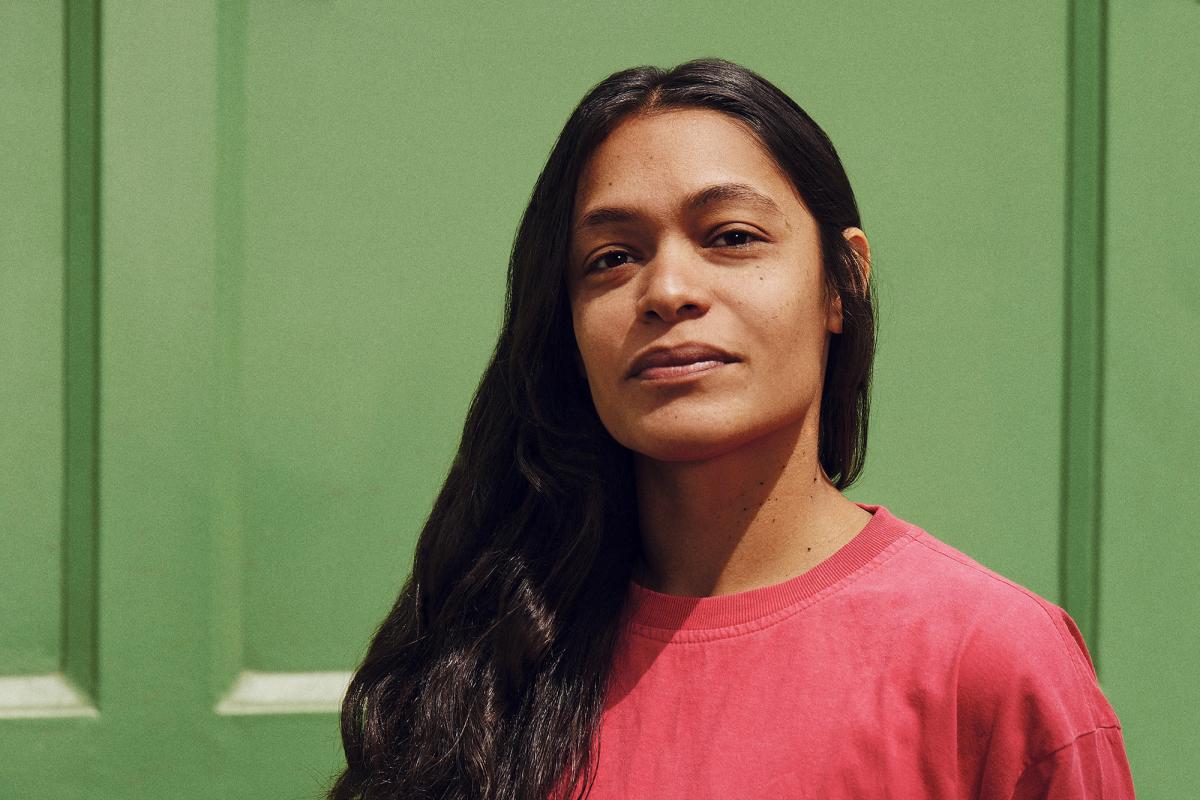In her first solo presentation in the US, the Brazilian artist Sallisa Rosa has created an immersive installation made from ceramics concocted from raw materials gathered in Rio de Janeiro, where she is based. The Audemars Piguet Contemporary commission, Topography of Memory (2023), evokes a miniature cave, enveloping the viewer in a meditative space. While the work symbolically references ancestry and identity, its themes are not specifically autobiographical. It aims to offer a more universal perspective on the ideas, allowing the materiality and physicality of Rosa’s process to come to the forefront.

A test run of Rosa’s Miami installation, featuring stacked and suspended ceramics, at her studio Courtesy the artist and Audemars Piguet
The multidisciplinary artist was born in Goiás in 1986 and has degrees in journalism and audiovisual creation and production. This year, she has participated in the XXIII Bienal de Arte Paiz in Guatemala, and is at present included in the exhibition Ana Mendieta: Silhueta em Fogo, Terra Abrecaminhos at the SESC Pompéia in São Paulo. Last year, Rosa was included in several major international group exhibitions, including the Summer Exhibition at the Royal Academy of Arts, in London. After its run during Miami Art Week, Topography of Memory will go on view next spring at the Pina Contemporânea in São Paulo (16 March-27 July 2024).
The Art Newspaper: You developed a unique material to create this installation, using earth sourced from rural Rio de Janeiro. Could you explain your process?
Sallisa Rosa: This is the first time I’m creating an installation entirely with ceramics, and it’s a massive work, with around 100 pieces. For me, it’s important to know where the earth comes from because there’s memory in the earth; this material is embedded with information. I only work with locally sourced clay. I collaborated with artisans who have a very traditional process of working. It’s challenging work; the earth is mixed with rocks, branches and sometimes trash, so it’s hard to prepare the clay for the firing process. It’s so fragile and volatile, but it’s a totally live material, and always produces distinct colours when mixed. I work with the information in the soil and reprogramme it, programming my own memories into the piece.
After Miami Beach, the installation will be shown in São Paulo next year as part of the inaugural programming of the Pina Contemporânea. How do you feel these separate sites will affect viewers’ experience?
There’s a public aspect to both exhibitions because the work is immersive, with stalagmite-like structures growing into the floor and areas throughout the piece that act like isolation booths. Once you leave the artwork, you’re back onto the street, or the crowd. These are both loud, urban spaces, but within the work the audience can remember what the earth feels like. Although the material is collected from Brazilian soil, the work is not specific to that place. Of course, there’s value in presenting it in a context that is closer to home, but it was crucial for the work to travel so it could challenge a wider range of perspectives.

Rosa tends to the fire that will heat the kiln in which she fired the ceramics in Itaboraí, near Rio Courtesy the artist and Audemars Piguet
Your work often references Indigenous ancestry and what it means to be an Indigenous person in Brazil, sometimes through more abstract manifestations like sculptural installations. How do these ideas play into your practice?
My work is not about specific communities, or a specific local perspective. I’m talking about collective memory—the memory of the earth and the water. Although it’s possible to see identity in my work, my own identity is transitory. There’s a movement of artists who are addressing identity through a more global perspective. Of course, we’re talking about territory and land and belonging and identity, but there are many different ways of approaching it that don’t necessarily have to put your work in any specific box.
You joined A Gentil Carioca over the summer and will have a solo exhibition with the gallery in São Paulo next year. Meanwhile, your works are on view at their stand at Art Basel in Miami Beach. What are you showing at the fair?
In Miami, there are some recent sculptures and drawings from a series called The Poison (2023)—the result of research on healing and detoxing, and the process of erosion that I made in preparation for The Topography of Memory. It’s about the process of cleansing and rejuvenation, and an extension of a series I presented in my solo exhibition Supernova at the Museu de Arte Moderna do Rio de Janeiro in 2021-22. In São Paulo next year, there will be drawings and sculptures that incorporate thorns that I collected and various other materials.
You recently began a two-year residency at the Rijksakademie in Amsterdam. What have you been working on?
I’ve been thinking about adaptability and researching how animals adapt to certain environments. As a child, when I lived in Mato Grosso, which is close to Pará and the Amazon rainforest, we had rats in our home. One night, I heard a noise, woke up and turned on the light. I saw a hybrid animal—a half rat, half bat. I called it a rato-cego (rat-bat). I asked people around the neighbourhood about this animal, and people told me it did exist. The rat had adapted to grow wings and fly away. I’ve been reflecting on this reference to adaptation and how I’m also changing aspects of myself to adapt to a new reality on another continent.
• Sallisa Rosa: Topography of Memory, until 17 December, Collins Park Rotunda, Miami Beach


